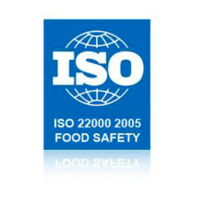ISO Solicits Comments on ISO 22000 Global Food Safety Standard

ISO (the International Organization for Standardization, based in Geneva, Switzerland) today invited stakeholders involved in the food chain who use, implement, or make reference to ISO 22000, to submit comments and feedback on the standard.
ISO 22000, the International Standard on food safety management systems, was published in 2005. Since then, ISO officials explained, global market needs have evolved and ISO plans to revise the standard this September.
In 2012, ISO conducted a global survey on certification, which revealed that the number of certificates for ISO 22000 increased by 20% between 2011 and 2012 and that food companies in 142 countries now certify to the standard. The survey also found that China, India and Greece were the top three countries for the total number of certificates issued, while the top three for growth in the number of certificates in 2012 were China, Romania and Japan.
In order to remain as relevant as possible, ISO standards are reviewed every five years to assess the need for a revision. The committee behind ISO 22000, ISO/TC 34/SC 17, is currently running a review until mid-June to collect as many comments as possible on the standard before the revision process is set to start in September.
The organization's solicitation for comments on ISO 22000 concluded: "So, if you represent industry, consumers, governments, regulators, laboratories, or any other organization active in the food industry, what do you like about the standard, what do you think needs to be changed and did you have any problems implementing it?"
To suggest improvements for the next version of ISO 22000, send comments to:
- The ISO member body in your country.
- The ISO technical committee ISO/TC 34/SC 17: hj@ds.dk
The comments received will be taken into account in the revision process.
ISO 22000 was designed to be used by any organization across the food chain, including both large and small businesses. The standard creates a framework for establishing principles, procedures and guidelines to manage food safety while helping to develop cost-effective management in the industry. It also provides practical tools needed for managing food safety as a single coherent system.
Looking for a reprint of this article?
From high-res PDFs to custom plaques, order your copy today!




